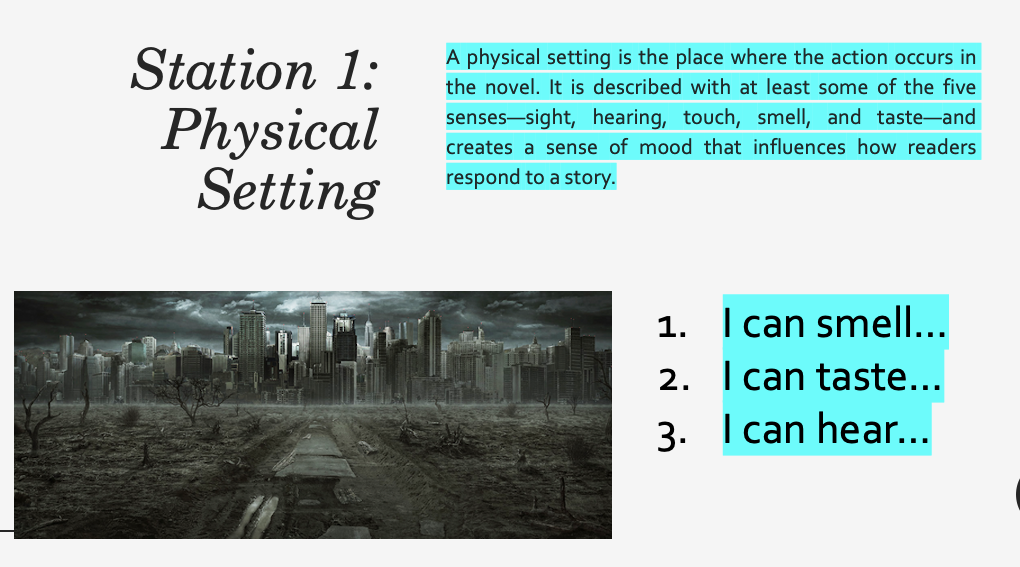The Situation
You are introducing setting to your students.
You are challenging your students by looking beyond physical setting.
The Solution
Did you know there are different types of settings? A setting is much more than where a character lives. It can also be the historical context, how people behave within an environment and how the setting reflects the feelings of a character. Setting is complicated, but it is possible to showcase straightforward examples that students can relate to.
When introducing setting, use stations so that students have independent time to acquire vocabulary and practise an individual skill.
- Start with a do now activity that focuses on students recording the adjectives for three settings that are closely related.

2. The first station is focused on physical setting. The physical setting is the most common type of setting that students will be familiar with. It involves the physical location that the character might occupy in the story. This type of setting relates significantly to geography and the the five senses. For this station, have student record what they can see, smell, taste, touch and hear within the image (Feel free to choose a setting that might connect with your students).

3. The social setting is likely going to be unfamiliar to students, but will draw upon their historical context. The social setting relates to the social context – that is what would it be like to live within the social environment. How might the experience of men and women be different within that society? What challenges or problems might people have within the social setting? These are questions that dig deeper than the appear of the setting and consider the nuances of how people behaviour.

4. In the historical setting, students focus on when events occur and when human live. The time and place are essential to the historical setting.
I have included a short extract from Charles Dickens’ Oliver Twist to explore the historical setting. Students can consider the types of artefacts that draw the reader to a particular historical environment.

5. And finally, we have the psychological setting. Absolutely the most difficult type of setting for students to understand. Otherwise known as pathetic fallacy, it pertains the way that the physical environment reflects to way a character feels. Pose the question to students, “have you ever noticed that when characters are upset, it begins to rain and thunder cracks? This is the psychological setting of that character.” When exploring the psychological setting, present straightforward examples that will be relatively familiar to students. From there, you can build up students’ understanding and present more complicated examples.

Lesson Summary
- Students are familiar with the four types of setting: physical, social, historical and psychological.
- Students have been given the opportunity to explore examples of each setting.
One thought on “Teaching…different types of settings”